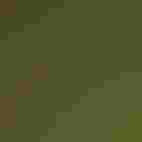Common Grackle
At a Glance
Throughout the east and midwest, this big blackbird is a very familiar species on suburban lawns, striding about with deliberate steps as it searches for insects. Common Grackles often nest in small colonies, and several males may perch in adjacent treetops to sing their creaking, grating songs. Big flocks are often seen flying overhead in the evening, heading for major communal roosts, especially from late summer through winter.
All bird guide text and rangemaps adapted from Lives of North American Birds by Kenn Kaufman© 1996, used by permission of Houghton Mifflin Harcourt Publishing Company. All rights reserved.
Category
Blackbirds and Orioles, Perching Birds
IUCN Status
Near Threatened
Habitat
Coasts and Shorelines, Fields, Meadows, and Grasslands, Forests and Woodlands, Freshwater Wetlands, Lakes, Ponds, and Rivers, Landfills and Dumps, Shrublands, Savannas, and Thickets, Urban and Suburban Habitats
Region
Alaska and The North, California, Eastern Canada, Florida, Great Lakes, Mid Atlantic, New England, Plains, Rocky Mountains, Southeast, Southwest, Texas, Western Canada
Behavior
Direct Flight
Population
67.000.000
Range & Identification
Migration & Range Maps
Migrates in flocks. Present all year in much of range. In the North, migration is quite early in spring and fairly late in fall.
Description
12" (30 cm). Long tail with "crease" down middle, whitish-yellow eyes, strong bill. Two forms: on widespread "Bronzed Grackle," bronzy body contrasts with blue-black head; "Purple Grackle" of southeast has purple and green gloss, less contrast. Juveniles have dark eyes. Molting birds in late summer have short or ragged tails.
Size
About the size of a Crow, About the size of a Robin
Color
Black, Blue, Brown, Purple, Yellow
Wing Shape
Rounded
Tail Shape
Long, Rounded, Wedge-shaped
Songs and Calls
Clucks; high-pitched rising screech, like a rusty hinge.
Call Type
Buzz, Whistle
Habitat
Farmland, towns, groves, streamsides. Common in many kinds of open or semi-open country. Often forages in farm fields, pastures, suburban lawns, cattle feedlots, marshes. Nests and roosts in places with dense trees (especially conifers) close to open areas, as in groves, woodland edges, parks.
Sign up for Audubon's newsletter to learn more about birds like the Common Grackle
Behavior
Eggs
4-5, sometimes 2-6. Pale blue, blotched with brown. Incubation is by female only, 12-14 days.
Young
Both parents feed nestlings, bringing them mostly insects. Young leave the nest about 16-20 days after hatching. 1 brood per year, sometimes 2.
Feeding Behavior
Forages mostly by walking on ground or wading in very shallow water; also up in trees and shrubs. When not nesting, usually forages in flocks. Sometimes steals food from Robins or other birds. Has been seen killing an adult House Sparrow. Will come to feeders for various items. When eating dry bread crumbs, may soak them in water first.
Diet
Omnivorous. Feeds on insects, including beetle grubs, grasshoppers, caterpillars, many others; also spiders, millipedes, earthworms, and such diverse items as crayfish, minnows, frogs, lizards, eggs and young of other birds, and small rodents. Vegetable matter also important in diet, may be majority in winter; includes berries, seeds, waste grain, acorns.
Nesting
Typically nests in small colonies of 10-30 pairs, sometimes to 100 or more. In courtship, male fluffs out body feathers, partly spreads wings and tail, and gives short scraping song; also postures with bill pointing straight up. Nest site is often well hidden among branches of dense tree or shrubs near water, less than 20' above ground; sometimes much higher, or very low in marsh growth. Unusual sites include hole in tree or hollow stump, in lower part of active Osprey nest, or inside old building. Nest (built by female) is bulky open cup of weeds, grass, twigs, usually with some mud added; inside lined with fine grass.
Conservation
Conservation Status
Widespread and very common, and has been expanding its range toward the west in recent decades.
Climate Threats Facing the Common Grackle
Choose a temperature scenario below to see which threats will affect this species as warming increases. The same climate change-driven threats that put birds at risk will affect other wildlife and people, too.













